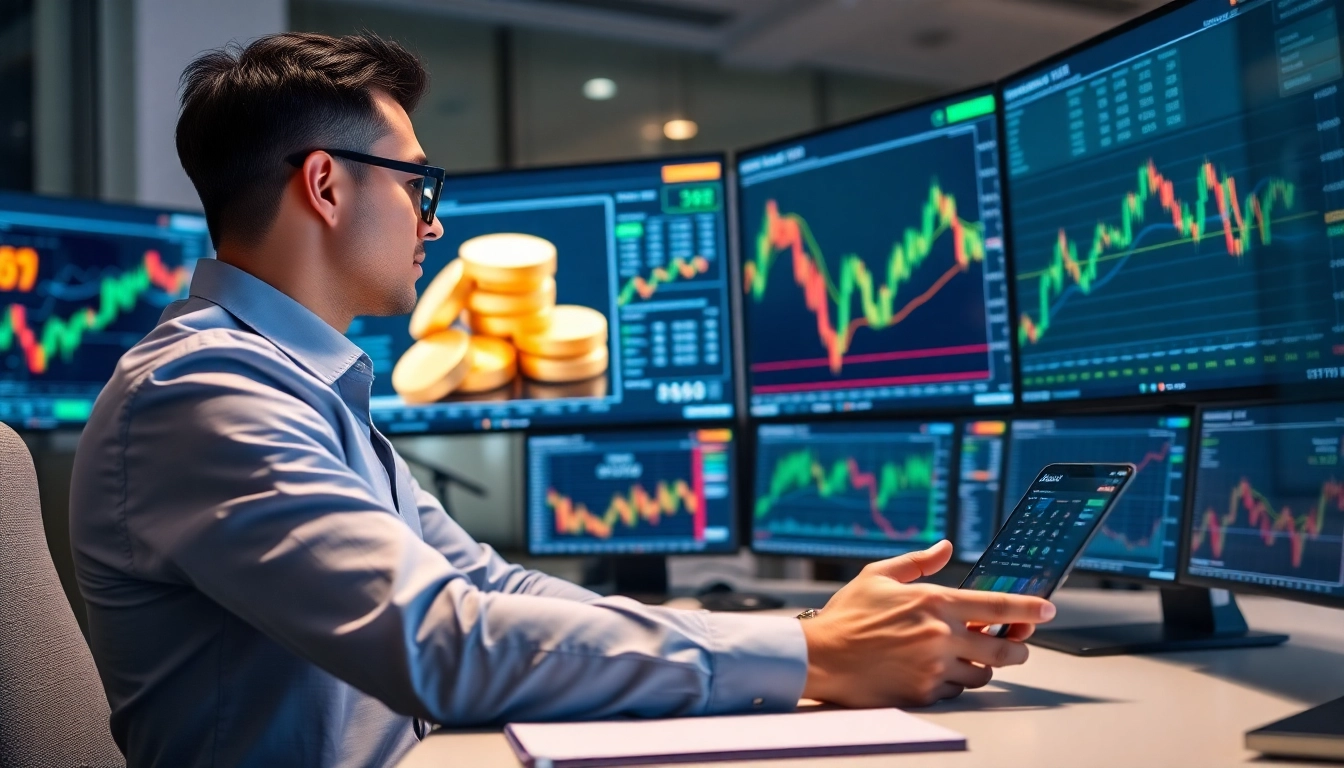Understanding the Current Stock Market Trends in Investment News
The global financial landscape remains highly dynamic, with recent fluctuations in stock markets reflecting a complex interplay of macroeconomic indicators, geopolitical events, and investor sentiment. In the latest Investment News, markets have demonstrated a mixed pattern—European shares closed marginally higher, while major U.S. indices showed signs of cautious optimism. This nuanced environment necessitates a deep dive into the driving forces behind these movements and practical strategies for investors navigating such volatility.
Analyzing Stock Market Fluctuations and Key Drivers
Recent market behavior indicates a careful balancing act. Factors such as inflation data, central bank policies, geopolitical tensions, and corporate earnings reports have all contributed to the current divergence. For instance, the recent U.S. labor report showing a resilient job market has influenced expectations regarding Federal Reserve rate movements, which in turn impacts equity benchmarks globally. European markets, on the other hand, benefited from steady defense stocks amid geopolitical uncertainties. Technical indicators like the 200-week trendline for cryptocurrencies remain critical for traders aiming to identify long-term bullish signals, such as Bitcoin’s potential to go ‘full bull’ if specific technical conditions are met.
The Impact of Global Economic Indicators on Markets
Economic indicators serve as vital barometers shaping market sentiment. The U.S. labor market, inflation rates, and manufacturing output data directly influence monetary policy decisions. For example, the recent U.S. labor data indicated robust employment figures, which tempered expectations of imminent rate cuts but left room for cautious optimism. Meanwhile, China’s weaker-than-expected manufacturing data and sluggish iron ore futures signals highlight ongoing manufacturing challenges that ripple across commodity markets and influence global equities. Additionally, currency movements, such as the dollar’s slight decline against the yen and euro, reflect traders’ anticipation of future policy shifts and economic resilience.
Practical Tips for Navigating Volatile Investment Environments
Investors must adopt disciplined strategies to mitigate risks in unpredictable markets. Diversification is paramount; balancing equity holdings with safe havens like gold and precious metals can cushion against downturns. Incorporating technical analysis to identify entry and exit points, as well as fundamental analysis to gauge long-term value, enhances decision-making. Maintaining a clear investment plan with defined risk tolerance and stop-loss levels can prevent emotional reactions during market swings. Regularly monitoring macroeconomic trends and geopolitical developments allows investors to anticipate potential shocks and adjust their portfolios proactively.
The Rise of Gold and Other Safe Havens in Investment News
Reasons Behind Gold Reaching New Record Prices
Gold’s recent surge to a new record of $3,501.59 an ounce—surpassing its previous high of $3,500.10—reflects its role as a safe haven amid ongoing global economic uncertainties. Several factors underpin this rally: US inflation data indicating persistent price increases, geopolitical tensions with countries like Russia and China, and the depreciation of major currencies. Gold’s intrinsic value and liquidity make it a preferred asset when markets are fragile, especially when equity and bond markets exhibit volatility or downward pressure.
Historical Comparison and Future Forecasts for Gold Investments
Historically, gold has cyclical patterns, often peaking during economic crises or periods of high inflation. The current trajectory suggests that if inflation remains stubbornly high and geopolitical risks persist, gold could sustain its upward momentum. Expert forecasts indicate a potential target in the vicinity of $3,600 to $3,700 in the next 12 months, contingent upon inflation trends and central bank policies. This makes gold a compelling diversifier, particularly as global monetary authorities reassess stimulus measures and interest rate trajectories.
How Diversifying with Precious Metals Benefits Investors
Incorporating precious metals like gold into a diversified investment portfolio can mitigate risks associated with currency devaluation, geopolitical upheavals, and stock market corrections. These assets often exhibit low correlation with traditional equities, serving as effective hedges. For example, during recent market dips, gold maintained or increased its value, preserving capital and offering liquidity during times of uncertainty. Tactical allocation—such as holding 5-10% of a portfolio in gold—can enhance resilience and improve risk-adjusted returns over the long term.
Trading Strategies and Insights in Investment News
Techniques for Maximizing Gains Amid Market Uncertainty
Effective trading in volatile environments requires a combination of technical mastery and disciplined risk management. Strategies such as trend following, breakout trading, and mean reversion can be tailored to current market conditions. For instance, traders observing that Bitcoin remains above its critical 200-week trendline might adopt a ‘buy on dips’ approach, capitalizing on short-term corrections within a broader bullish cycle. Using tools like moving averages, RSI, and Fibonacci retracements helps identify optimal entry points and set realistic profit targets.
Using Technical and Fundamental Analysis Effectively
Technical analysis provides insights into price patterns, volume, and momentum, while fundamental analysis focuses on economic indicators, corporate earnings, and geopolitical factors. Combining both approaches creates a comprehensive view. For example, when the dollar weakens and commodity prices like oil and gold rise, it signals potential opportunities for traders. Simultaneously, monitoring earnings reports and macroeconomic releases helps gauge the underlying health of markets and guides strategic adjustments.
Managing Risks and Setting Realistic Investment Goals
Risk management is the cornerstone of sustainable trading. Techniques include position sizing based on volatility, setting stop-loss orders to contain losses, and adopting a disciplined exit strategy. Investors should align their targets with their risk appetite and market outlook, avoiding overleveraging or emotional decision-making. Regular portfolio reviews ensure that allocations remain aligned with evolving market conditions and personal financial goals.
Emerging Financial Technologies and Policies in Investment News
Cryptocurrency Market Updates and Regulatory Outlooks
Cryptocurrencies continue to garner mainstream attention, with recent data showing Bitcoin, Ether, and other top digital assets exhibiting mixed recent performance. The SEC’s regulatory actions have introduced volatility, but institutions like MicroStrategy and Coinbase are actively engaging in strategic moves—such as Bitcoin buy-sprees or expanding crypto trading revenues—to capitalize on the evolving landscape. Regulatory clarity remains vital for long-term adoption, with agencies worldwide debating frameworks that balance innovation with investor protection.
The Influence of AI and Machine Learning on Trading Platforms
Artificial intelligence is increasingly integrated into trading systems, offering predictive analytics, automated order execution, and sentiment analysis. Meta Platforms’ exploration of partnerships to enhance app features through AI exemplifies this trend. These technologies enable traders to analyze vast datasets swiftly, identify patterns, and execute trades with greater precision—giving an edge in fast-moving markets.
Adapting to Policy Changes Like Digital Currency Regulations
As governments develop policies on digital currencies—such as the UK’s strict conditions for Facebook’s Libra cryptocurrency—market participants must stay informed. Compliance with new regulations can influence market dynamics, affect liquidity, and determine the viability of digital asset offerings. Adaptive strategies, including diversification into traditional and alternative assets, will help investors navigate regulatory uncertainties and capitalize on emerging opportunities.
Future Outlook and Predictions in Investment News
Forecasting Market Movements Based on Current Data
Given the current macroeconomic signals—resilient employment, tentative inflation easing, and geopolitical tensions—analysts project a cautiously optimistic outlook for equities, gold, and cryptocurrencies. Markets may experience short-term corrections before resuming upward trends, especially if inflation moderates and central banks signal dovish shifts. Monitoring leading indicators and technical thresholds, such as Bitcoin’s 200-week trendline or gold’s key support levels, will be crucial for timing investments.
Key Sectors to Watch in Upcoming Investment Cycles
Emerging sectors like renewable energy, cybersecurity, and AI-driven technologies are poised to outperform, buoyed by policy incentives and technological advancements. Meanwhile, traditional sectors such as banking could benefit if interest rates stabilize or decline. Mining companies, especially those involved in critical resources like lithium and rare earth metals, will also gain attention amid green transition efforts.
Preparing Your Portfolio for the Next Economic Shift
Proactive portfolio management involves maintaining diversified allocations, employing tactical hedges like gold and defensive stocks, and staying agile with dynamic rebalancing. Incorporating options and other derivatives can offer downside protection, while active monitoring of macroeconomic shifts enables timely repositioning. Establishing a clear set of investment goals aligned with risk tolerance ensures resilience against unforeseen market upheavals.



